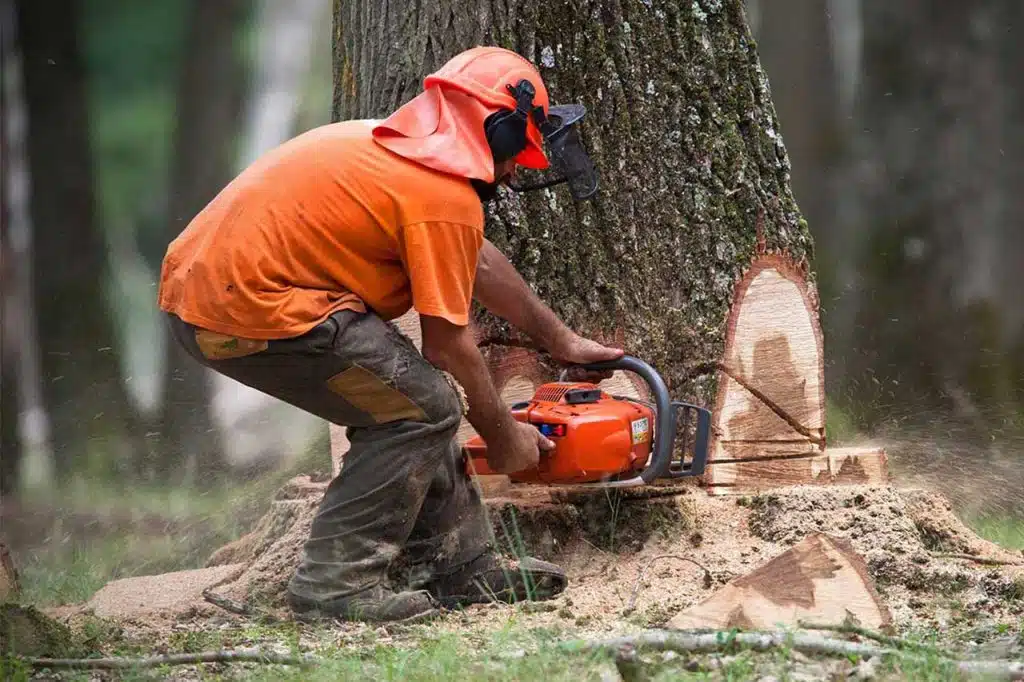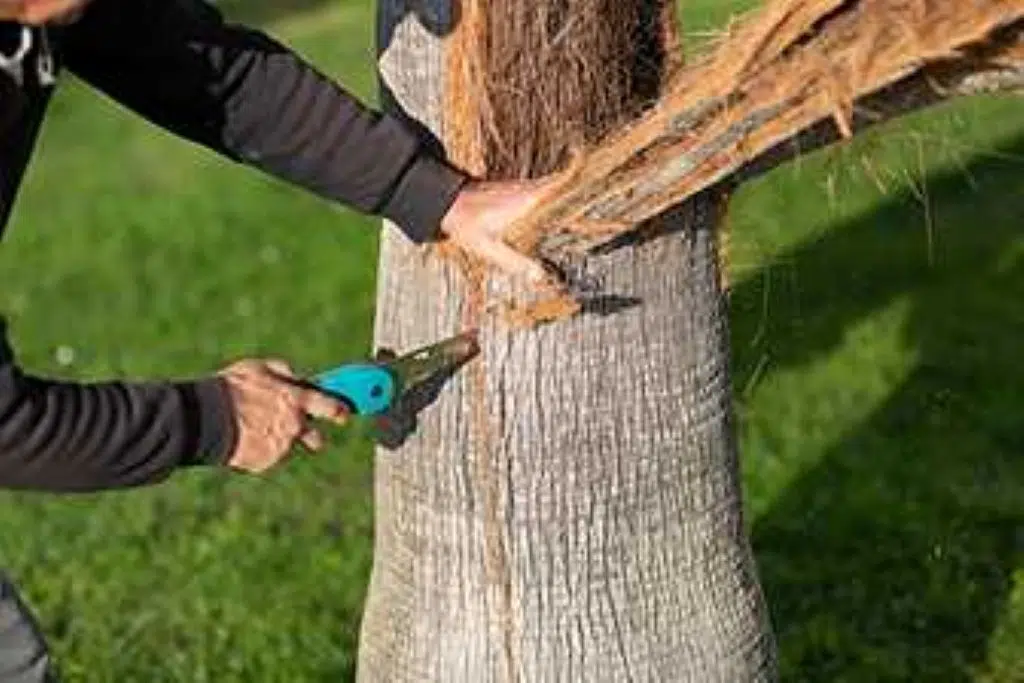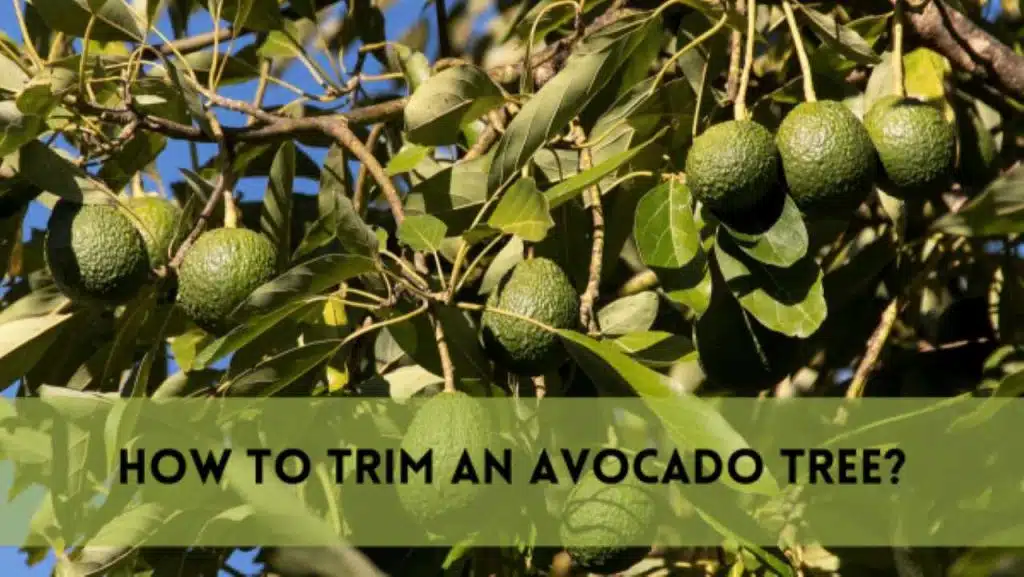Welcome to the in-depth tutorial about palm tree root removal’s art and science. Palm palms are a common sight in many landscapes thanks to their lovely fronds and exotic attractiveness. But there are times when it’s necessary to say goodbye to these trees and their deep root systems. Understanding the methods and intricacies of palm tree root removal is essential whether you’re remodeling your outside area, resolving safety issues, or getting ready for development.
We’ll set out on an adventure to investigate the many techniques and procedures involved in safely and successfully removing palm tree roots. We will look into the key resources, thorough processes, and security precautions that are required for success.
Why Remove Palm Tree Roots?
For lots of reasons, removing palm tree roots is important. The main benefit is that it aids in averting potential harm to neighboring infrastructure and structures. Because palm tree roots can be invasive, aggressive, and surface-bound, they can damage building foundations, sidewalks, and roadways, requiring expensive repairs.
Furthermore, it’s important for the palm tree’s overall health to get the roots out. Inability to absorb nutrients and water due to overgrown or damaged roots can result in poor development and probable instability during storms. The protection of your property is therefore guaranteed, and the palm tree’s general health is enhanced, thanks to routine root care.
Tools Required:
- Gloves, safety glasses, long-sleeved clothing, and robust boots are all examples of safety gear that can help you avoid accidents and debris.
- Digging around the roots requires a strong shovel.
- Pickaxe or mattock: Helpful for removing obstinate roots from the ground.
- Cut smaller roots with loppers or pruning shears.
- Chainsaw (Optional): A chainsaw can be used to cut the palm tree stump down to the ground if it is still standing.
- Safety Rope (Optional): If working with a larger tree, use it to restrict the fall’s direction.
- Fabric Root Barrier
- Put on the necessary protective gear so you can stay safe while working.
Safety Measures
The task of removing palm tree roots might include heavy machinery, sharp instruments, and possible hazards, thus safety is of the utmost importance. The following are crucial safety precautions for anyone removing palm tree roots:
- Equipment for personal protection (PPE):
- Wear the proper protective clothing, such as safety goggles or glasses to shield your eyes from flying objects.
- Dependable work gloves to protect your hands from splinters, blisters, and wounds.
- Wearing long sleeves will protect your arms and legs.
- Boots with strong traction and a closed toe to prevent slipping and shield your feet from flying items.
- Head Protection
- Safety Rope (If Necessary)
- Secure the Area
- Prevent Tripping Hazards
- Keep the work area free of clutter and potential tripping hazards
- Beware of Falling Debris:
- Be cautious of falling branches, fronds, or debris as you cut and remove roots.
- Stay Hydrated and Take Breaks
Step-by-Step Guide to Remove Palm Tree Roots
Now that we’ve laid the groundwork for understanding palm tree roots and have taken necessary safety precautions, let’s delve into the step-by-step process of removing them. Proper execution of these steps will ensure the successful removal of palm tree roots without causing harm to your landscape.
Preparing for the Removal Process
- Assessing the Palm Tree: Before you start removing any roots, take a close look at the palm tree. Identify the main root system and any obvious problems. Understanding the tree’s structure will help you plan your removal strategy.
- Obtaining Any Necessary Permits: In some areas, you may need permits or permissions to remove a palm tree. Check with your local authorities or homeowner’s association to ensure you’re in compliance with regulations.
- Clearing the Area Around the Palm Tree: Remove any obstacles, such as rocks, mulch, or ground cover plants around the palm tree. This will give you more space to work and prevent tripping hazards.
Removing Smaller Palm Tree Roots
- Techniques for Removing Surface Roots: Start with the smaller surface roots, which are usually easier to deal with. Use a hand pruner or loppers to cut the roots cleanly. Be cautious not to damage the main trunk while cutting.
- Using a Shovel and Saw for Small Roots: For slightly larger roots, use a sharp shovel to cut them cleanly. You can also use a hand saw or reciprocating saw for roots that are too tough for pruners. Make sure to wear safety gloves to protect your hands.
Removing Larger Palm Tree Roots
- Strategies for Dealing with Deep, Stubborn Roots: When dealing with deep and stubborn roots, you might need to dig around them with a shovel to expose more of the root. Then, use a saw or root saw to cut through them. Take your time and work patiently to avoid damaging surrounding structures or plants.
- Employing Mechanical Methods if Needed: In cases of exceptionally large or stubborn roots, consider using mechanical equipment like a stump grinder or an excavator with a root-cutting attachment. These machines can efficiently remove even the toughest roots, but they should be operated by experienced individuals to avoid accidents.
Dealing with Stump Remnants
- Options for Stump Removal or Grinding: After removing most of the roots, you may be left with a stump. You can either dig it out manually, use a stump grinder, or hire a professional tree removal service to complete this task.
- How to Fill the Stump Hole: Once the stump is removed, fill the hole left behind with soil or mulch to level the ground. This will help prevent accidents and promote healthy plant growth.
Disposing of Removed Roots and Debris
Dispose of the removed palm tree roots and debris responsibly. You can compost smaller roots and debris if they are disease-free, or contact your local waste management services for proper disposal options.
Advantages of Removing Palm Tree Roots
There are various advantages of removing palm tree roots:
Flexibility in landscaping: You can rebuild your landscape without being constrained by the roots of the palm tree.
Safety: Removing roots decreases the risk of tripping and shields structures from root-related harm.
Prevention of Disease: Infected roots can be cut out to stop the disease from spreading to other plants.
Construction or renovation projects where roots could potentially interfere with foundations or structures require this.
FAQS
Can I transplant a palm tree instead of removing its roots?
Yes, palm trees can be successfully transplanted. Consult a professional for guidance on the process.
Are palm tree roots invasive?
Palm tree roots can be invasive, potentially damaging structures and surfaces.
How do I know if palm tree roots are damaging my property?
Signs of damage include raised sidewalks, cracked driveways, and foundation issues. A professional assessment can confirm the cause.
What’s the best time of year to remove palm tree roots?
It’s typically best to perform root removal during the tree’s dormant season, often in late winter or early spring.
Are there any eco-friendly methods for palm tree root removal?
Yes, eco-friendly methods, such as root pruning and transplanting, can minimize the impact on the environment while achieving your removal goals.
Conclusion
In conclusion, remove palm tree root is a laborious but essential activity for a variety of reasons, including landscaping, safety, and building. You may successfully get rid of these tenacious roots and make your surroundings safer and more aesthetically pleasing by using the right techniques and safety procedures.
Always put safety first by donning the appropriate protective gear and making sure the workspace is free of any risks. Choose the removal technique that best meets your demands after evaluating the job’s size and complexity, whether it be hand excavation, machinery, or chemical treatments.





